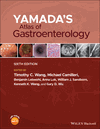Alcohol-related liver disease
Summary
Alcohol-related liver disease (ALD) is the most frequent endorgan complication encountered among adults with prolonged heavy alcohol consumption. The majority of patients are diagnosed when they present to the healthcare service with advanced disease. AH is characterized by recent onset and often profound jaundice with additional features of liver failure. Unrecorded alcohol, noncommercially available alcoholic beverages such as “home brews” or “moonshine,” may account for up to a quarter of global alcohol consumption. Typically, the clinical course of ALD is silent until presentation with decompensated liver disease or a complication of cirrhosis or portal hypertension. The pathogenesis of AH is incompletely understood, in part due to the lack of animal models that reproduce the main clinical and histological features.



